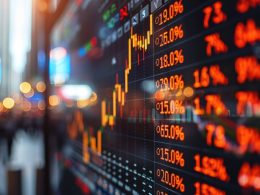At present, heavy purchases of Treasury debt would be easily accomplished by the Federal Reserve. But once the Fed has quadrupled or quintupled the U.S. monetary base from its level of three years ago, how will it reverse its position? Japan was able to successfully reverse its program of QE several years ago without much impact on yields, but unlike the U.S., it had the luxury of an extremely high savings rate. With nearly 95% of its debt held domestically, Japan had no need to resort to foreign capital. In contrast, over half of the U.S. national debt is held by other countries. Without a deep pool of domestic savings, and with no repurchase agreements in place, the Federal Reserve will eventually have to entice domestic and foreign investors to buy the Treasury securities back, pressuring interest rates higher, and virtually ensuring a capital loss.
It is unlikely that QE will result in a significantly greater use of existing slack capacity and labor in the U.S. economy. But several years from now, as the U.S. economy recovers (no thanks to the Fed, but simply by the emergence of new technologies and markets through innovation), the Fed will have no easy choices. Attempting to sell massive amounts of debt into an expanding economy will risk pressuring interest rates higher and choking off the recovery, while paying interest on reserves to discourage banks from lending them will ultimately require the Fed to pay banks more than the yield on comparable Treasury securities, in order to cover the opportunity cost of keeping the reserves idle.
Commodity Hoarding
An additional fruit of careless, non-economic thinking on behalf of the Fed is the idea of announcing an increase in the Fed's informal inflation target, in order to reduce expectations regarding real interest rates. The theory here - undoubtedly fished out of a Cracker Jack box - is that lower real interest rates will result in greater eagerness to spend cash balances. Unfortunately, this belief is simply not supported by historical evidence. If the Fed should know anything, it should know that reductions in nominal interest rates result in a lowering of monetary velocity, while reductions in real interest rates result in a lowering of the velocity of commodities (commonly known as "hoarding").
Look across history both in the U.S. and internationally, and what you'll find is that suppressed real interest rates are not correlated with an acceleration of real economic activity, but rather with the hoarding of commodities. Importantly, when people hoard, they generally hoard items that aren't subject to depreciation, technological improvement, or other forms of obsolescence. Look at the prices of the objects that are rising in price at present - gold, silver, oil - and you will see this dynamic in action. That said, investors should not extrapolate these advances indefinitely, because all of these commodity prices have moved up in anticipation of Fed action, and now rely on massive and sustained quantitative easing. They do not represent low risk investment opportunities at present, elevated prices.
Better policy options are available on the fiscal menu. Historically, international credit crises have invariably been followed by multi-year periods of deleveraging, but measures can be taken to smooth the adjustment. The key is to focus on the economic constraints that are binding. Presently, these relate to high private debt burdens, uncertainty about income, weak aggregate demand, and the reluctance by U.S. businesses to launch new projects. Appropriate fiscal responses include extending unemployment benefits, ensuring multi-year predictability of tax policy, expanding productive forms of spending such as public infrastructure, supporting public research activity through mechanisms such as the National Institute of Health, increasing administrative efforts to restructure debt through writedowns and debt-equity swaps, abandoning policies that protect reckless lenders from taking losses, and expanding incentives and tax credits for private capital investment, research and development.
Meanwhile, the best course for the Federal Reserve is to identify specific constraints within the U.S. banking system that create barriers to sound lending, and to formulate specific policies to relieve those constraints. Throwing a trillion U.S. dollars against the wall to see what sticks is not sound monetary policy. By pursuing a policy that relaxes constraints that are not even binding, depresses the U.S. dollar, threatens to destabilize international economic activity, encourages a "boom-bust" cycle, provokes commodity hoarding, and pops off the Fed's last round of ammunition absent an immediate crisis, the Fed threatens to damage not only the U.S. economy, but its own credibility.
Market Climate
Reduce risk.
Presently, a wide range of risky assets are priced in a way that requires perfection. Corporate bond yields are barely above 3%, while our estimates for 5-7 year total returns for the S&P 500 hover around zero. Even our precious metals models, which with few exceptions have been constructive for nearly a decade, shifted to a "high risk" condition last week.
Demand for risky assets has not been driven by the prospects for unusually high returns. Rather, investors feel "forced" to take risk despite elevated valuations, largely thanks to Federal Reserve action. The Fed has provoked risk taking by driving down competing Treasury yields to levels that have given investors no apparent option but to take risk. But now that valuations are elevated and prospective long-term returns are compressed, the only way for this situation to be sustained is for investors to remain willing to accept low long-term returns indefinitely.











